Types of camellias – 10 elegant varieties for evergreen interest and early color
There's one for every garden in our handpicked edit of these flowering shrubs

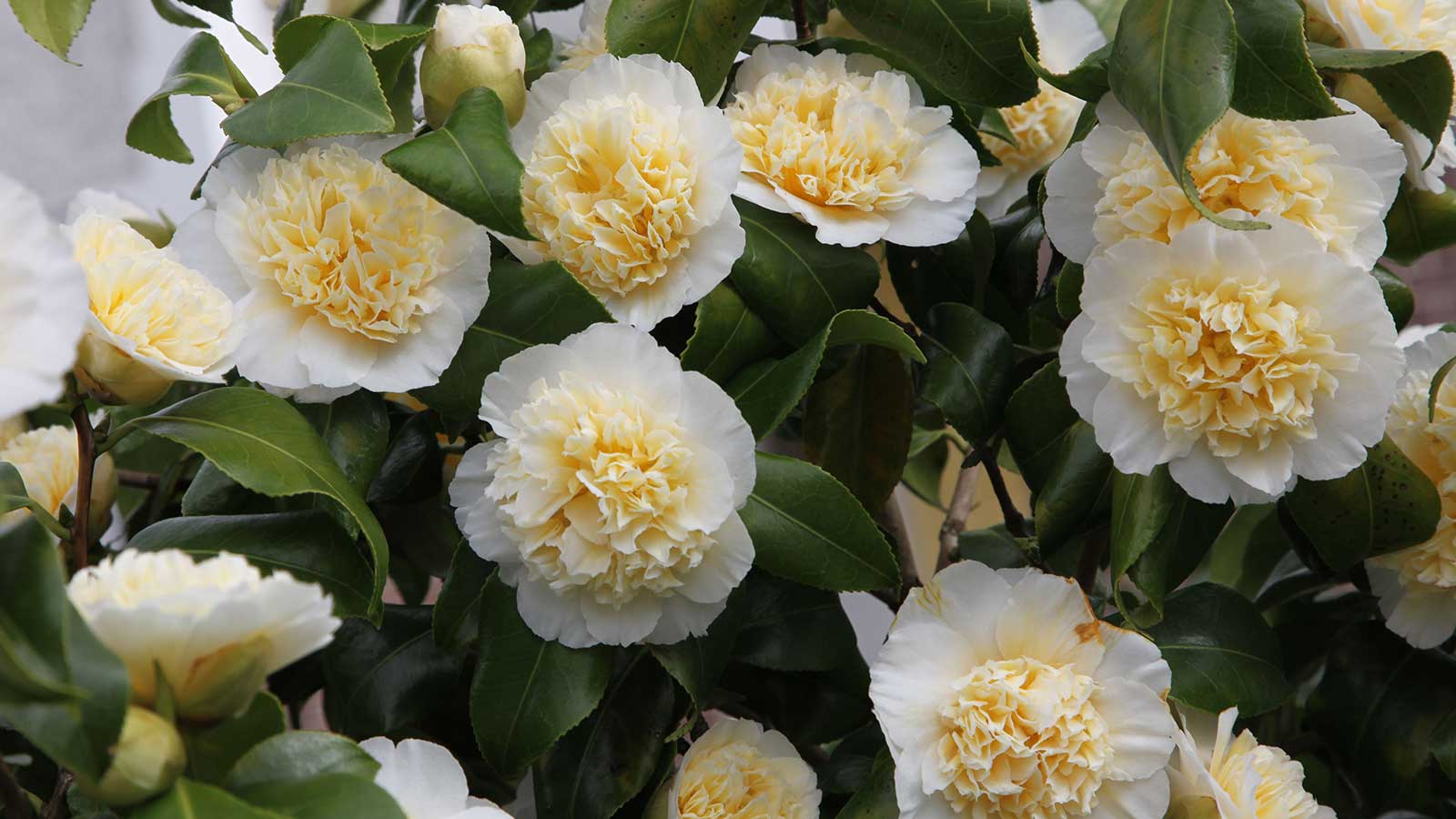
Hailing from China and Japan, imagine the excitement when camellias were first introduced to Europe and then to America during the 18th century. One look at these glossy evergreens with flamboyant blooms convinced growers they were tender and to begin with, all types of camellias were grown in the glasshouses of wealthy plant collectors.
Nowadays, these flowering shrubs grace many gardens. In colder regions, Camellia reticulata and its hybrids are likely to need a sheltered position or the protection of glass during winter. But cultivars of Camellia japonica are generally hardy down to 5°F. Then there are the durable and floriferous C. x williamsii varieties – the result of hybridization between C. japonica and C. saluensis in the 1930s.
There is enough variation in camellia flowers to suit all tastes, from neat singles or semi-doubles to gorgeous formal doubles like ‘Desire’ or heavy, exuberant anemone- and peony-form flowers. Where space is tight, camellias are easily trained against walls and fences, and grow well in pots and also as hedges. Most camellias flower in spring, but mild weather often encourages buds to show color in late winter, so that careful siting is needed to ensure flowers are not damaged by frost. These are woodland dwellers: by growing camellias in light, dappled shade and moist but well-draining lime-free soil and sheltering them from frost and drying winds, they will thrive.

As a trained horticulturalist, garden writer and broadcaster, and the author of multiple books, Anne Swithinbank has an extensive knowledge about plants. Here, she shares her top picks for camellias – from a frilly yellow variety to one with red and white stripes.
10 types of camellias that will shine in your spring garden
Site these flowering shrubs thoughtfully in your backyard and they will bloom for you year after year.
1. C. japonica ‘Adolphe Audusson’

- Height: 20ft
- Spread: 20ft
- Hardiness: USDA 7b/8a
Plenty of red, semi-double blooms will open on this compact evergreen shrub from early to mid-spring. Handsome foliage makes a fine backdrop to these flowers, which are 4-5in in width, each bearing at its center a projecting boss of golden stamens.
Prune these camellias to regulate their size – thin out taller stems after flowering.
2. C. japonica ‘Desire’
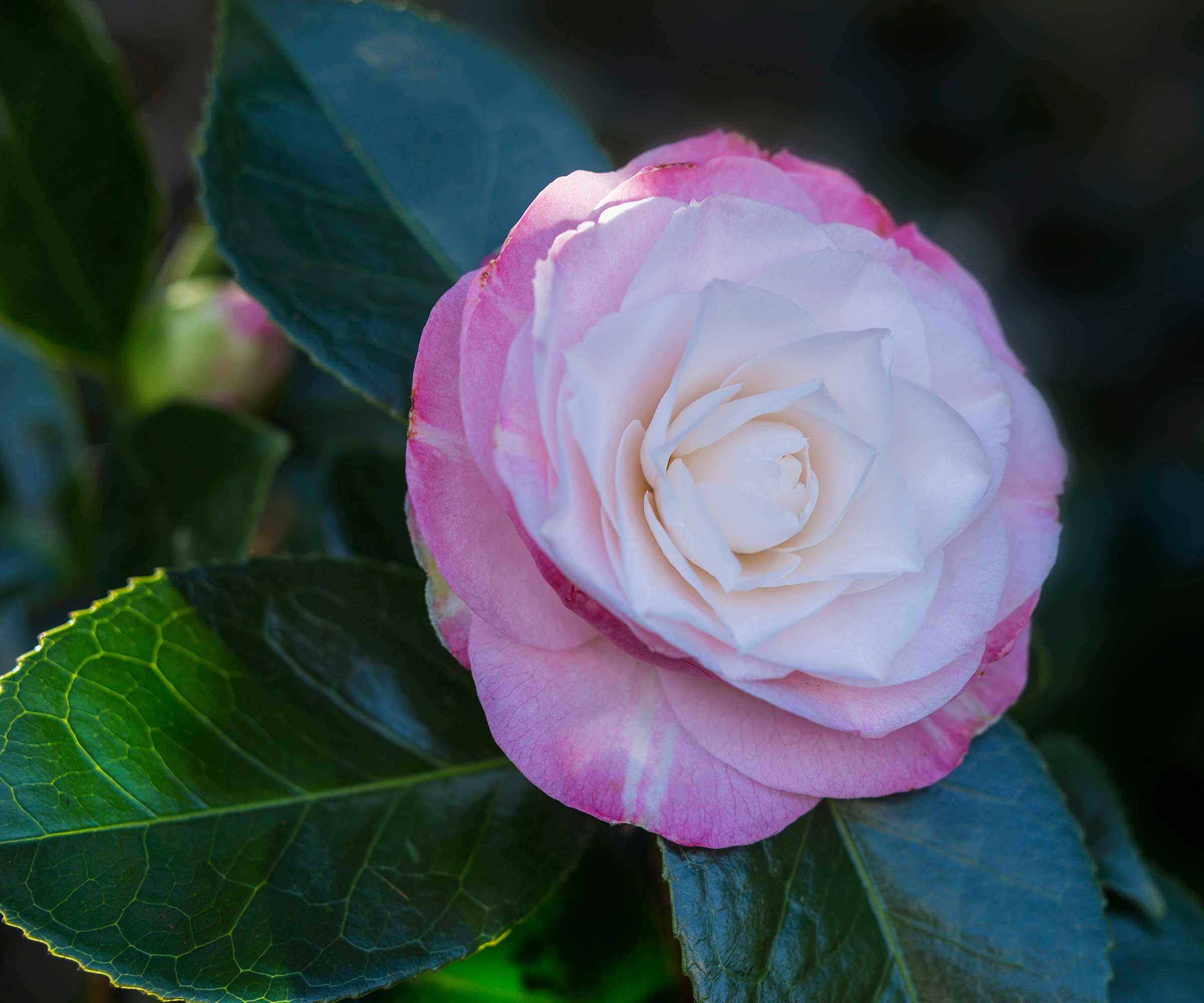
- Height: 10ft
- Spread: 10ft
- Hardiness: USDA 7b/8a
This camellia is well known for its upright habit and gorgeous mid-spring blooms. From shell pink buds the formal double flowers open to reveal layers of pointed, overlapping petals that are white at the center but pink-flushed at the edge.
Design expertise in your inbox – from inspiring decorating ideas and beautiful celebrity homes to practical gardening advice and shopping round-ups.
Plants are almost too vigorous for containers, but C. ‘Commander Mulroy’ bears similar blooms with a more compact form.
3. C. x williamsii ‘Jury’s Yellow’
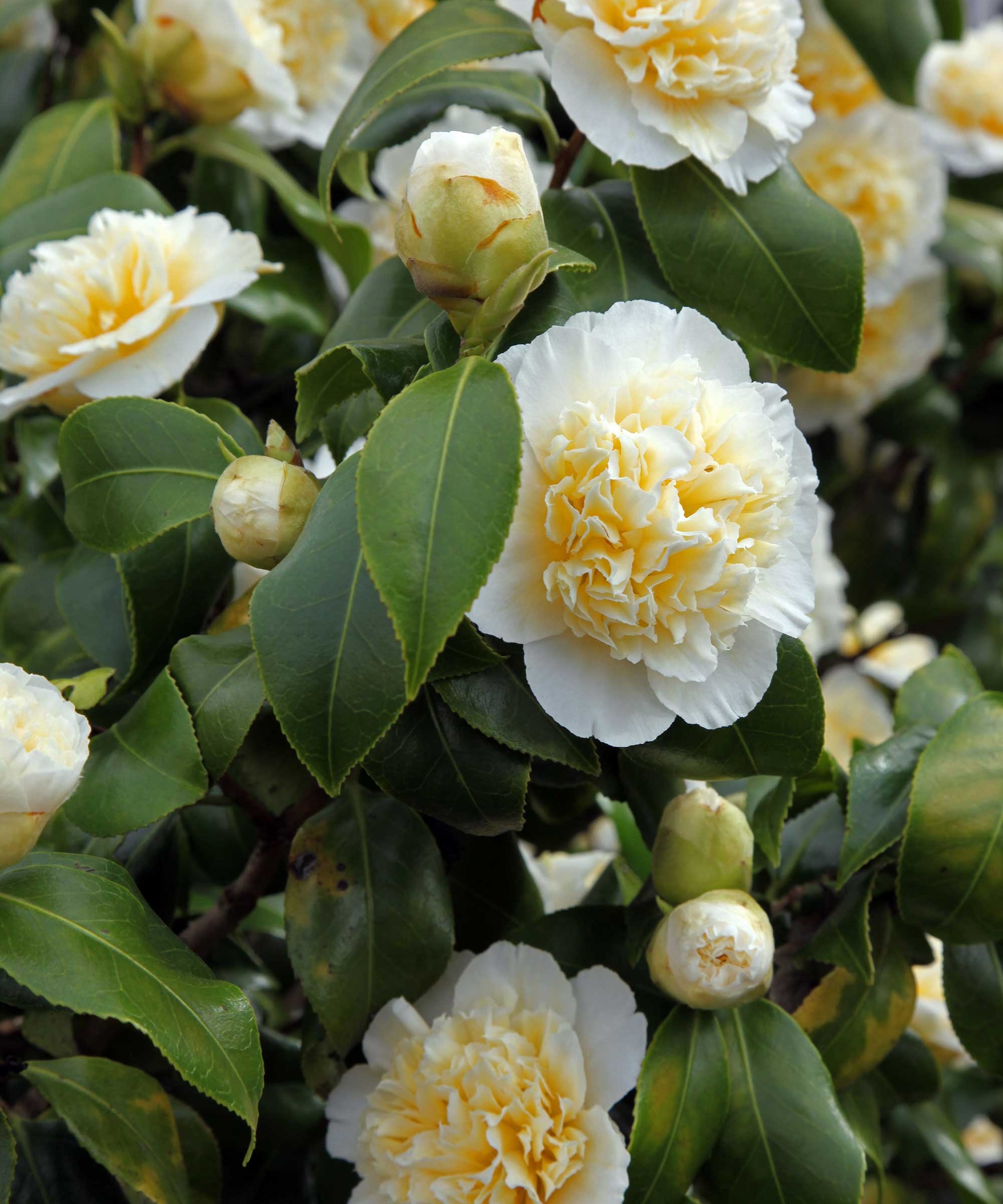
- Height: 10ft
- Spread: 10ft
- Hardiness: USDA 7b/8a
The anemone-form flowers of this compact, upright-growing camellia always catch the eye with their white petals lit by a mass of creamy-yellow petaloids clustered at the center. These open generously from mid to late spring and are surprisingly weather tolerant.
This camellia also grows well in containers and makes its way onto many wish lists. It's available to buy from Amazon.
4. C. x williamsii ‘Elegant Beauty’
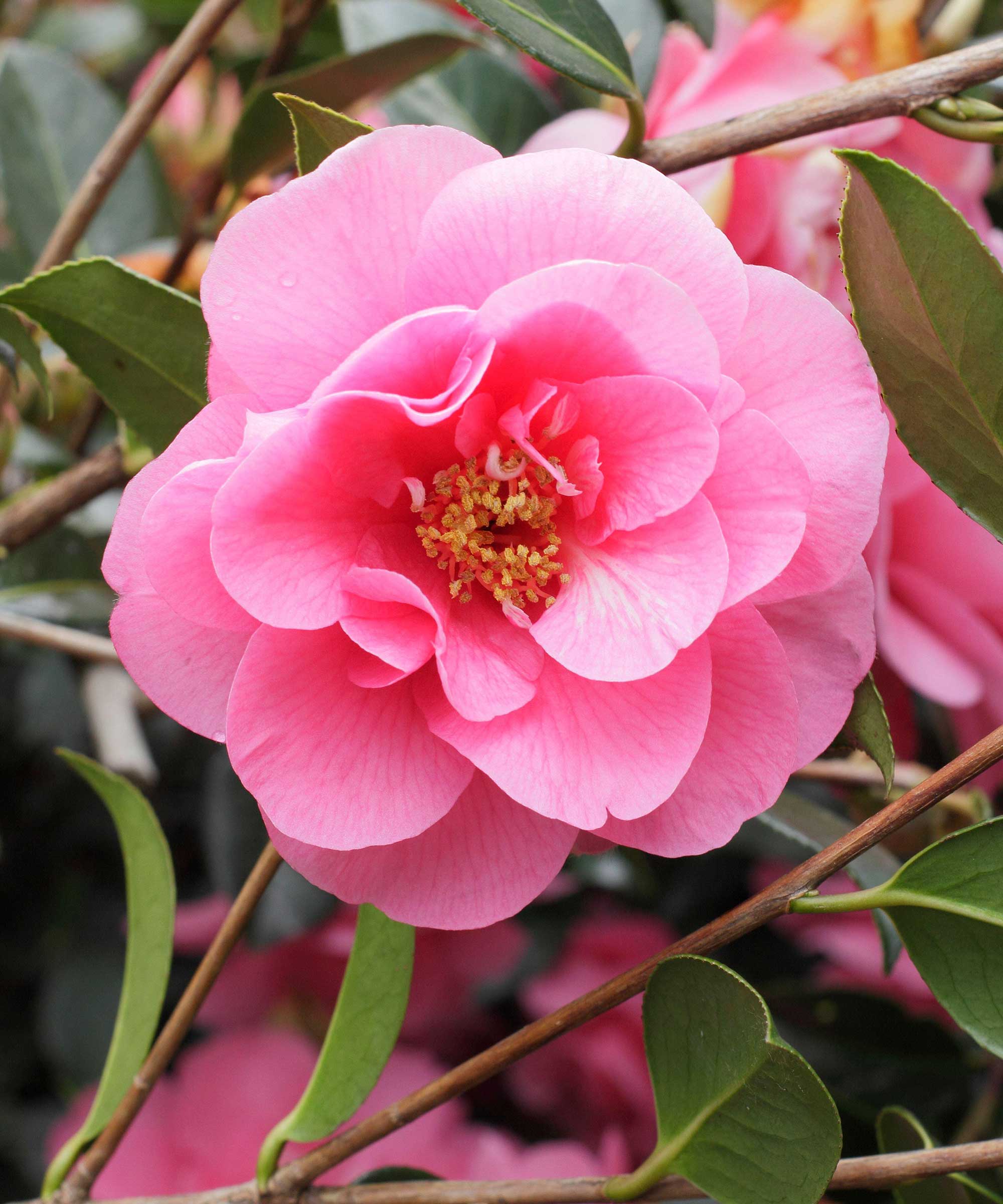
- Height: 10ft
- Spread: 10ft
- Hardiness: USDA 7b/8a
Pretty rose-pink anemone- or peony-form flowers with deeper pink veins are held on a shrub whose lax, arching stems are perfect for training in against a backyard wall or fence.
The blooms open later in spring, running less risk of being caught by frost. Young shoots show a good bronze tint. It's great for clothing the uprights of city and courtyard gardens.
5. C. japonica ‘Lavinia Maggi’
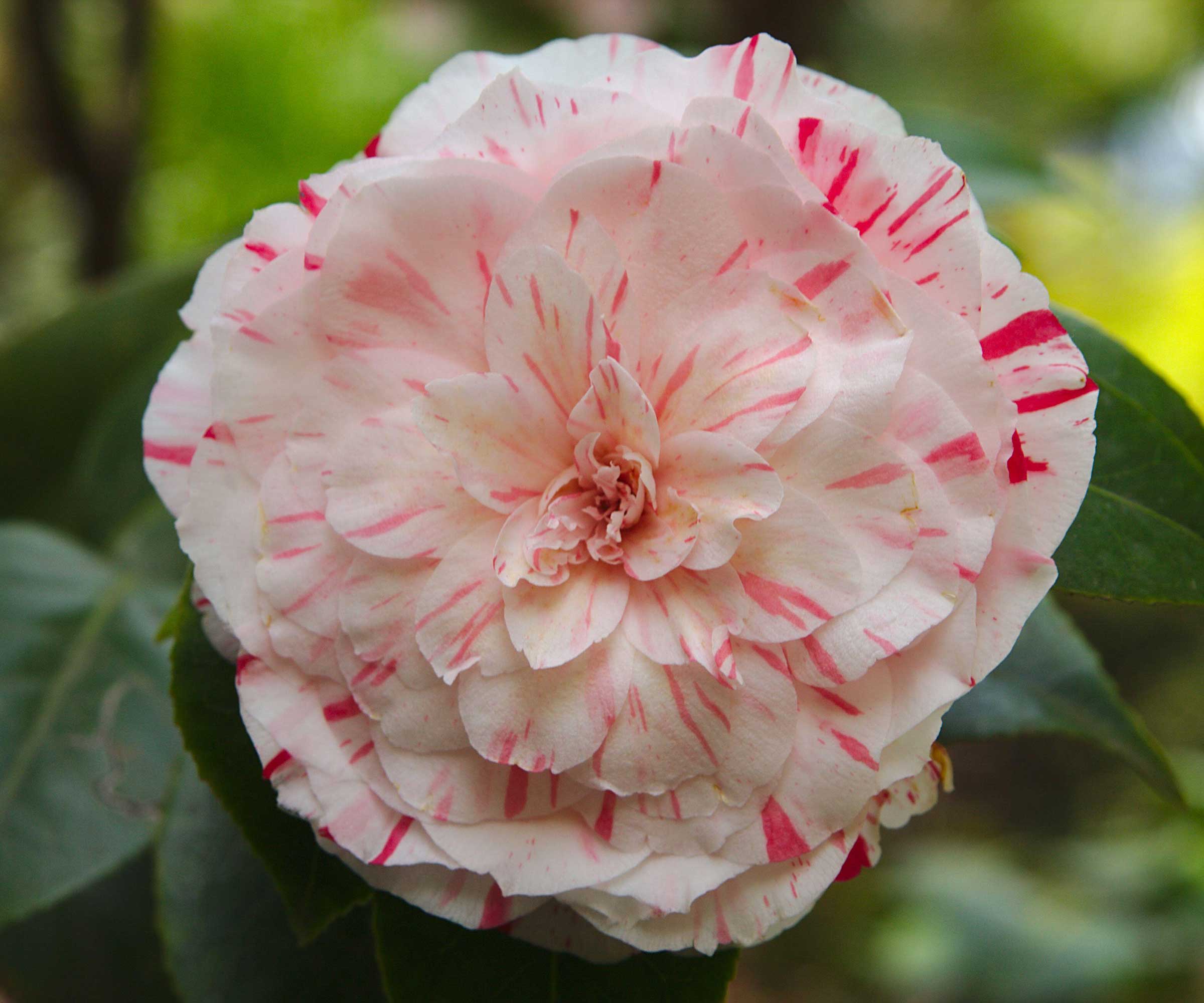
- Height: 10ft
- Spread: 10ft
- Hardiness: USDA 7b/8a
I like a stripy camellia flower and this one bears formal doubles composed of white petals striped irregularly with cerise pink. These open from late winter, to a good 4in across, on a vigorous, spreading plant.
If you want more color, spring-flowering C. japonica ‘Oranda-Ko’ bears pink flowers striped and streaked with white.
6. C. japonica ‘Lily Pons’

- Height: 10ft
- Spread: 10ft
- Hardiness: USDA 7b/8a
Although growth is somewhat open at first, this is not necessarily a disadvantage and with maturity, this camellia will become more dense and bushy.
The large blooms to 6in across are single or sometimes semi-double and white with long, spoon-shaped petals and a good boss of golden stamens showing at the center. They open from mid to late spring.
7. C. japonica ‘Nuccio’s Jewel’
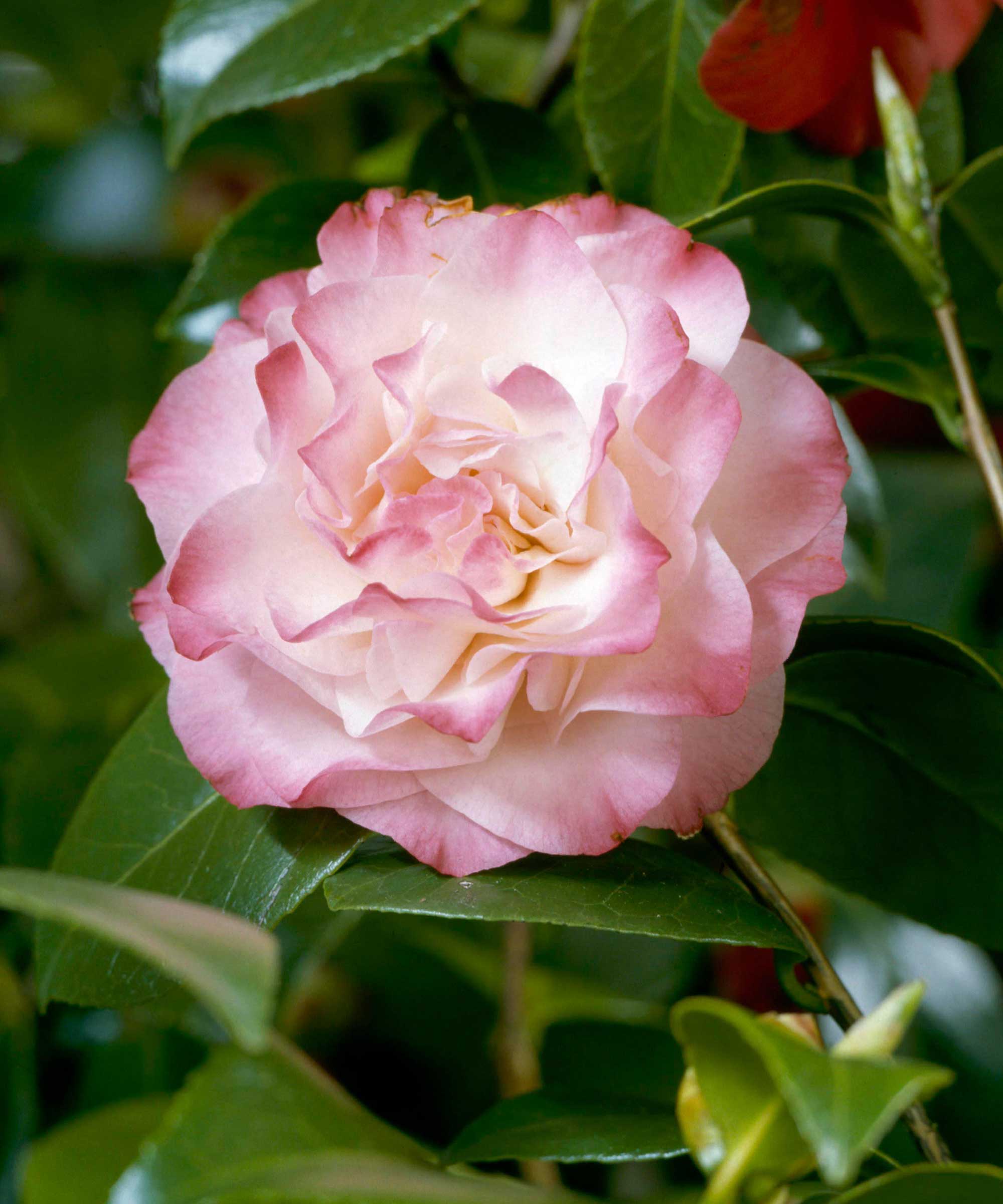
- Height: 10ft
- Spread: 7ft
- Hardiness: USDA 7b/8a
This compact camellia of medium size bears gorgeous semi-double peony-form blooms to 4in wide of glowing peachy-rose pink.
From the same stable, ‘Nuccio’s Pearl’ bears formal double flowers with pointed white petals with those at the outer edge flushed pink. Both usually begin flowering early, with buds swelling and bursting in late winter.
8. C. reticulata ‘Francie L’
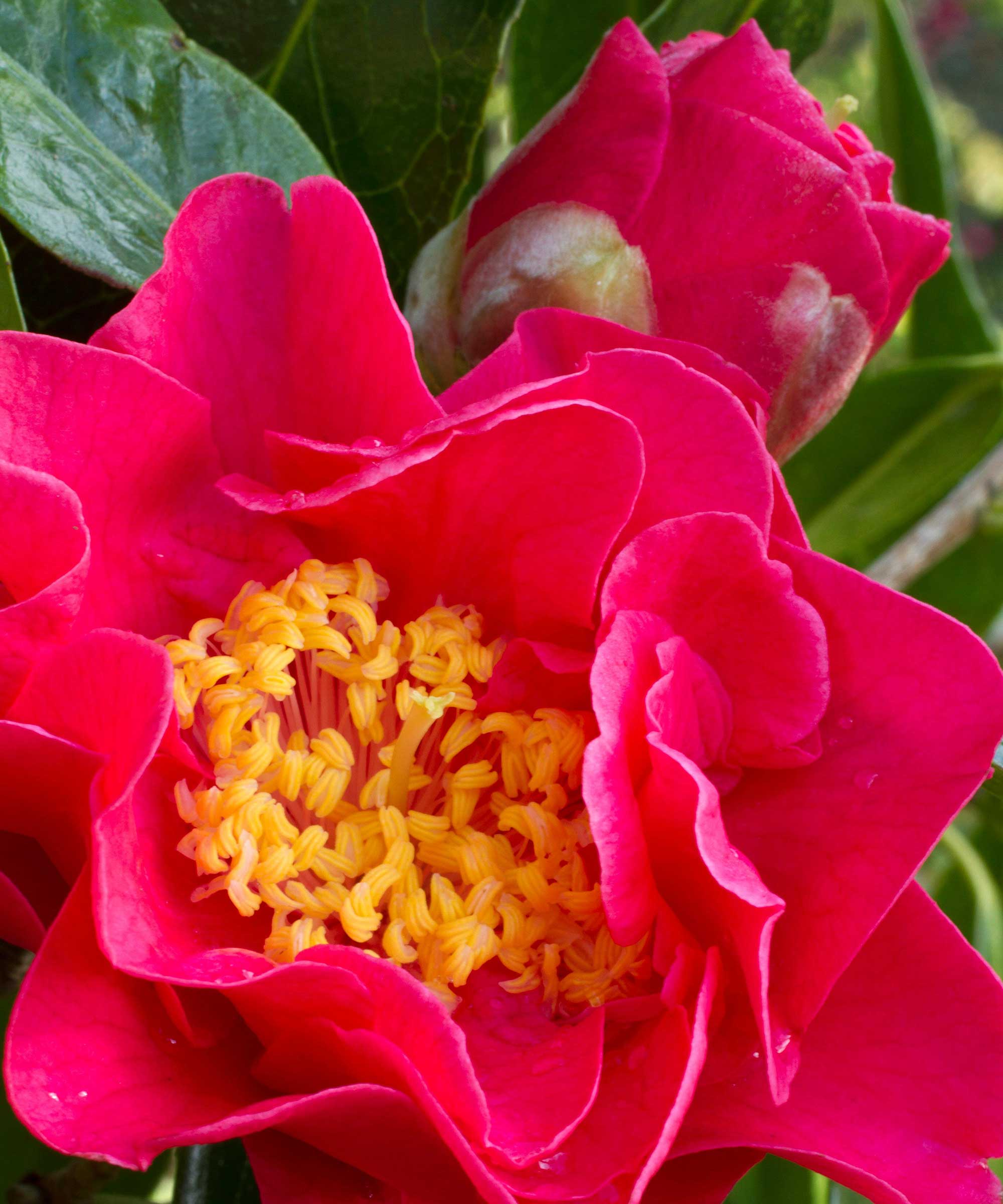
- Height: 20ft
- Spread: 20ft
- Hardiness: USDA 8b/9a
Making a large, vigorous plant, this reticulata hybrid will need a little more protection from frost, cold and wind than some. Yet if you can meet its needs, the sumptuous semi-double blooms in warm coral-red lit by golden stamens at the center will be worth the effort.
These open from late winter to spring against narrow, elegant leaves. Perfect for wall-training.
9. C. x williamsii ‘Bow Bells’
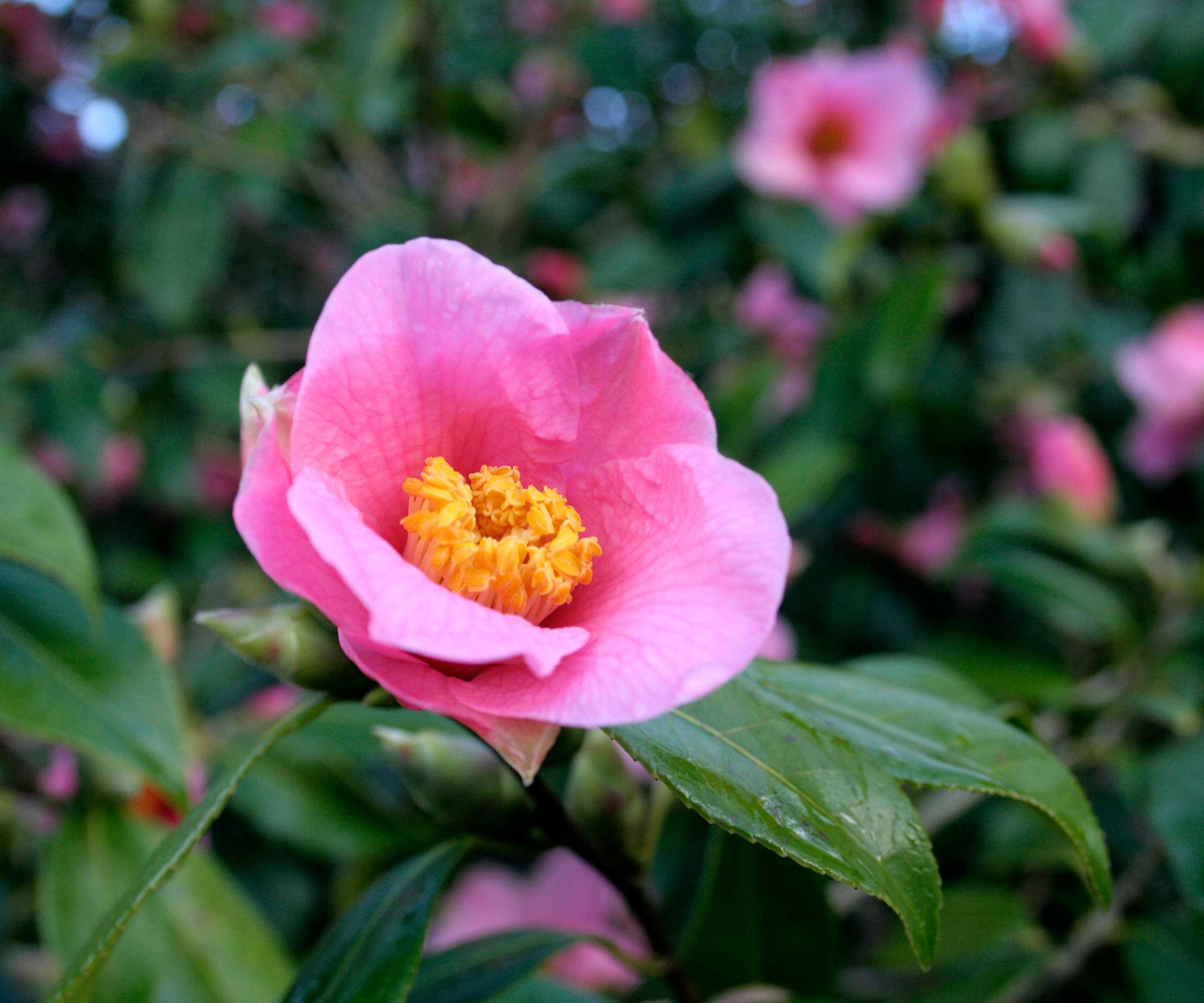
- Height: 12ft
- Spread: 10ft
- Hardiness: USDA 8b/9a
This slow-growing, compact camellia is perfect for smaller gardens and containers. There is a plentiful supply of medium-sized single blooms opening over a long period from mid-winter to mid-spring.
Trumpet-shaped and rose pink, these flowers are in scale with the plants and more reliably produced when sited against a shady wall.
10. C. ‘Nicky Crisp’
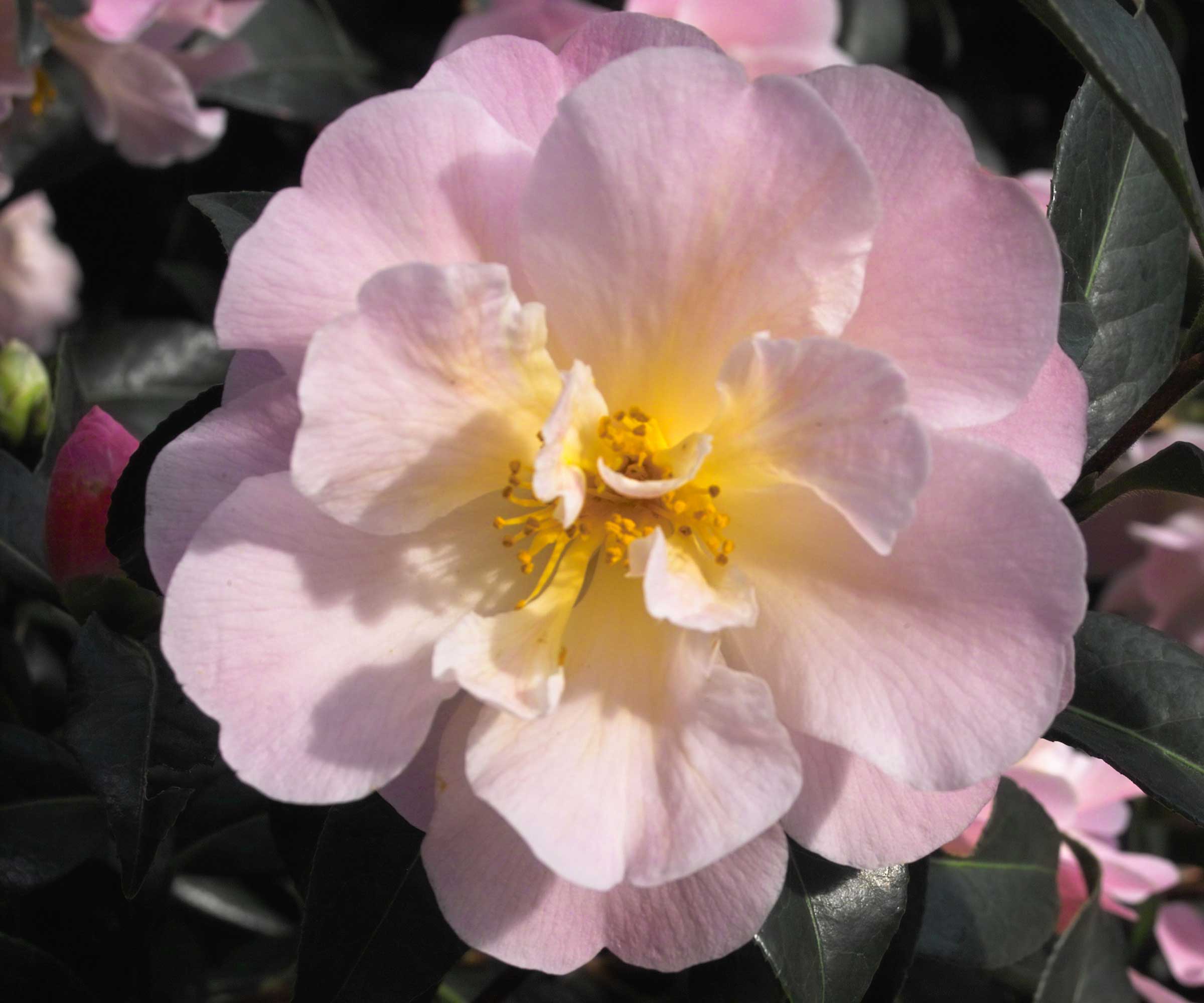
- Height: 7ft
- Spread: 5ft
- Hardiness: USDA 7b/8a
I would grow any camellia in a container garden, but slow-growing, compact and free-flowering are all qualities to look for when choosing specific cultivars.
This one produces semi-double blooms in clear pink. Quite large, they open in early to mid-spring. Remember that the roots and soil in pots and tubs should never be allowed to freeze – insulate the sides of your container if necessary.

Having trained at Kew Gardens in London and worked in parks department nurseries and as Glasshouse Supervisor at RHS Wisley, Anne has been a freelance horticulturist since 1986. Anne writes for Amateur Gardening and has been a regular panelist on BBC Radio 4’s Gardeners’ Question Time for 27 years. A large plot full of wildlife habitats, edible and ornamental plants is Anne’s workshop and inspiration.